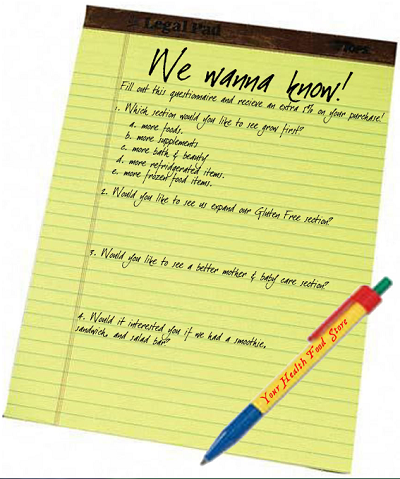Internet Marketing Tip # 14: Content Development
 If you have ever sat in front of a blank computer screen with a blog deadline hanging over your head like Poe’s raven while you think to yourself “never more” will I have a coherent thought let along some good blog post ideas, guess what—You are not alone. Some people can just write from their encyclopedic knowledge base concerning their field. They know their target market, the market’s pain points and how to help. But the rest of us need to do some serious work first and there is no shame in that.
If you have ever sat in front of a blank computer screen with a blog deadline hanging over your head like Poe’s raven while you think to yourself “never more” will I have a coherent thought let along some good blog post ideas, guess what—You are not alone. Some people can just write from their encyclopedic knowledge base concerning their field. They know their target market, the market’s pain points and how to help. But the rest of us need to do some serious work first and there is no shame in that.
According to Wikipedia, the free encyclopedia:
Web content development is the process of researching, writing, gathering, organizing, and editing information for publication on web sites. Web site content may consist of prose, graphics, pictures, recordings, movies or other digital assets that could be distributed by a hypertext transfer protocol server, and viewed by a web browser.
There are plenty of articles written about how to apply this. One I particularly like is written by Dana Pulis, Marketing Cooler: 'Content Development' is more than just writing ... written May 2013:
I began my marketing career as a writer, doing what all good writers do: crafting copy that told the unique stories of my clients to the audiences they hoped to reach. So when I first heard the term “content development,” I equated it with little more than good (and plentiful) copywriting.
It didn’t take long for me to learn, however, that content development — when done properly — is far more than good copy. It is a powerful strategy that allows a brand to tell its story and attract customers across multiple media.
It’s important to note that content marketing and content development are far from being new. In the 1890s John Deere launched a customer magazine called “The Furrow” that is still in print today. Rather than being an overt advertisement, the magazine educated farmers about the new technologies emerging in their industry and how they could improve their businesses. By providing key information in an engaging way, the company generated goodwill among its target audience that likely ensured their products would be considered when the time came to make an equipment purchase.
 Brainstorming
Brainstorming
To use this powerful strategy different writers in different sorts of situations rely on everything from doing all the work mentioned in Wikipedia themselves to getting with a team to brainstorm ideas, working with different writers, consolidating drafts, having a set of reviewers and on and on. Most of us don’t have the budgets for this sort of work. But we do have computers.
It’s a good idea to know who you are targeting, what their pain points are and how you can give them some information to help them feel like you are the right business for them to work with. Notice I said some information. It’s not a good idea to give them the whole cake or why would they need you any more? That’s where your calls-to-action come in handy. You mention that you have this great whitepaper or guide that will give them more information and have this guide located and discussed at least 3 times on your page, including a link right in the text.
Content Curation
How do you find out some current information to let your potential customer know that you are on your toes about the subject? There is content curation software around that will help you search in a way better than just Google searching your keywords. The software I use gives me the date the information was entered into the search engine. I automatically skip right past anything from last year unless I really am not finding what I want.
After getting a lot of sites and adding them to a research document, I download the links to the document along with original URLs. Then comes the phase that Ron Jones calls in a rather old, but still golden article Web Content Development 101 organize and filter:
Organize and filter the ideas and concepts you came up with and switch brain hemispheres (to the left) and move these concepts into logical buckets or themes. Filter any ideas or concepts that don't match up to your targeted keywords or goals for your website and discard them. Think in terms of your target audience. What will they want to read, see, or hear to compel them to stay a while?
Basically what I do is skim all the articles looking for ones that I can use for references. As I narrow down the field, I put the articles I want into another file. Finally I am ready to write and use the information I got from the curation process to help me organize my thoughts and come up with some good quotes as added authorities for my blog.
With my content designed and developed, I become right-brained again and create. Once I have done all the work, the writing comes easily. If I am not sure about what I have discovered, I will play with the subject until I have a feel for it. I did that when I played with PicMonkey and changed my face.
This is far from the end of content development because articles must be SEO optimized, the artwork created, and the readability principles and publishing are still ahead. Even further on the horizon are syndication, social media, replying to comments and checking analytics. You can find references to these things in other articles I have written.
I just looked down at my word count and I have gone from “nevermore” to almost 1,000 words without realizing it. Now it’s your turn. How do you go about doing content development?
The Raven: http://i1168.photobucket.com/albums/r484/awenalive/a2c7224c.jpg
Brainstorm: http://i286.photobucket.com/albums/ll110/Anetax/brainstorm.jpg
 Jaco Grobbelaar is the owner of BroadVision Marketing. BroadVision Marketing works with business owners to put in place inbound and outbound marketing strategies that consistently secure new clients. The BroadVision Marketing Training Center is located in Petaluma, CA and primarily serves companies in the San Francisco Bay area.
Jaco Grobbelaar is the owner of BroadVision Marketing. BroadVision Marketing works with business owners to put in place inbound and outbound marketing strategies that consistently secure new clients. The BroadVision Marketing Training Center is located in Petaluma, CA and primarily serves companies in the San Francisco Bay area.
Jaco can be reached at jaco@broadvisionmarketing.com or 707.766.9778 or connect with Jaco on Facebook - www.facebook.com/broadvisionmarketing - and LinkedIn - www.linkedin.com/in/JacoGrobbelaar.
You May Also Like
These Related Stories

Inbound Marketing: 6 Steps to Conducting Market Research

Inbound Marketing Tip: Content Curation—What Exactly Is It?



Comments (8)